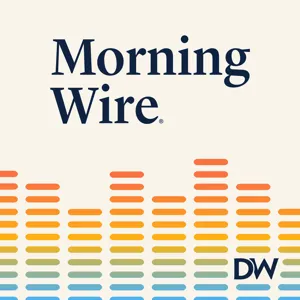Podcast Summary
Effective COVID-19 response relies on robust testing: Robust testing is necessary for governors to monitor infection rates, identify hot spots, and make informed decisions about reopening economies. Diagnostic and antibody tests are essential tools, but limited supplies pose a challenge.
Robust testing is crucial for governors to effectively assess and manage the spread of COVID-19 and safely reopen their economies. The lack of sufficient testing supplies is currently a major obstacle, as diagnostic testing, which determines active infections, and antibody testing, which identifies past infections and potential immunity, are both essential tools. The initial rollout of diagnostic testing in the US faced significant challenges, but efforts are ongoing to increase production and availability. Without consistent and widespread testing, governors cannot effectively monitor infection rates and hot spots, hindering their ability to make informed decisions about reopening.
Initial diagnostic testing issues in US caused delays and bottlenecks: The US initially faced diagnostic testing capacity limitations due to contaminated CDC tests, slow FDA approval process, and essential supply shortages, hindering effective response during the critical spread of the virus.
The initial issues with diagnostic testing in the US, specifically contaminated tests from the CDC, caused significant delays in testing for public health labs and other testing facilities in February. This bottleneck was compounded by the Food and Drug Administration's slow approval process for private labs to develop their own tests. By March, things began to improve with policy changes from the FDA and the availability of high-capacity testing machines, but new challenges emerged, including shortages of essential testing supplies such as swabs and chemical reagents. The situation was further complicated by the fact that many of these supplies were produced in areas heavily affected by the virus, leading to global demand and supply chain disruptions. Overall, the US faced significant diagnostic testing capacity limitations during a critical time in the spread of the virus.
Testing capacity vs actual testing: Despite increasing diagnostic tests for COVID-19 in the US, supply chain issues for testing materials and ongoing shortages prevent hospitals and labs from doing as many tests as they could, hindering efforts to control the virus and reopen the country.
While the number of diagnostic tests for COVID-19 in the US is increasing, it's not nearly enough to reopen the country. The supply chain for testing materials, including swabs, masks, and vials, is still causing significant bottlenecks. The White House claims there is sufficient testing capacity, but hospitals and labs face ongoing shortages, preventing them from doing as many tests as they could theoretically handle. This disconnect between potential testing capacity and actual testing is a major obstacle to effectively controlling the virus and reopening the country.
Antibody tests face complications in accuracy: The FDA's approach to antibody tests allows for unapproved sales, leading to inconsistent test results, necessitating careful distinction of reliable tests
The antibody test, which determines if someone has previously had COVID-19, is experiencing complications similar to those encountered with diagnostic tests. This new category of tests is crucial for understanding the virus's spread in communities, identifying immune individuals, and potentially reopening parts of the economy. However, the FDA's approach to antibody tests has been vastly different, allowing companies to develop and sell tests without prior approval. This has led to a multitude of tests with varying degrees of accuracy, making it essential to distinguish reliable tests from less accurate ones. Currently, only a few antibody tests have been found to deliver consistent, reliable results.
False positives in coronavirus antibody tests can mislead individuals and hinder public health decisions: High false positive rates in coronavirus antibody tests can lead to incorrect assumptions of immunity and hinder accurate assessments of virus spread, necessitating the use of reliable tests and transparency in testing data.
The false positive rate in some antibody tests for the coronavirus can be as high as 16%, which means that a significant number of people could be incorrectly identified as having had the virus and having antibodies to it. This false understanding could lead individuals to believe they are immune and act accordingly, potentially putting themselves and their communities at risk. The high false positive rate also makes it difficult for public health leaders to accurately assess the spread of the virus in their communities and make informed decisions about reopening and moving forward. The government's hands-off approach to testing has resulted in a lack of clarity and reliability, leaving governors and public health officials to figure out which tests to use and trust on their own. While some tests have been identified as more accurate, it is crucial to continue prioritizing the use of reliable tests and promoting transparency in testing data to ensure public safety and effective response to the ongoing pandemic.
Fragmented US healthcare system hinders COVID-19 testing: The lack of a centralized healthcare system in the US causes delays and a lack of testing capacity for COVID-19 due to inability to pivot to alternative tests, supply chain issues, and unreliable diagnostic and antibody tests.
The fragmented nature of the US healthcare system is significantly hampering our ability to effectively and efficiently test for COVID-19. The lack of a centralized system means that hospitals and labs are often unable to easily pivot to alternative testing options when necessary, resulting in delays and a lack of testing capacity. This issue is compounded by supply chain problems and the unreliability of both diagnostic and antibody tests. Ultimately, this lack of testing capacity and accuracy is slowing down the process of getting a grasp on the virus and reopening the economy.
Responsibility for coronavirus testing shifts from federal government to states: The White House has handed over coronavirus testing to the states, with the federal government providing backup support.
The White House has shifted the responsibility for coronavirus testing from the federal government to the states, with the federal government acting as a backup supplier. Meanwhile, the CDC has expanded its list of coronavirus symptoms to include chills, repeated shaking with chills, muscle pain, headache, sore throat, and loss of taste or smell. New York State has canceled its presidential primary, with supporters of Bernie Sanders pushing for it to be held to gain more delegates, but the state arguing that it would be purely symbolic and a distraction from the pandemic response.






